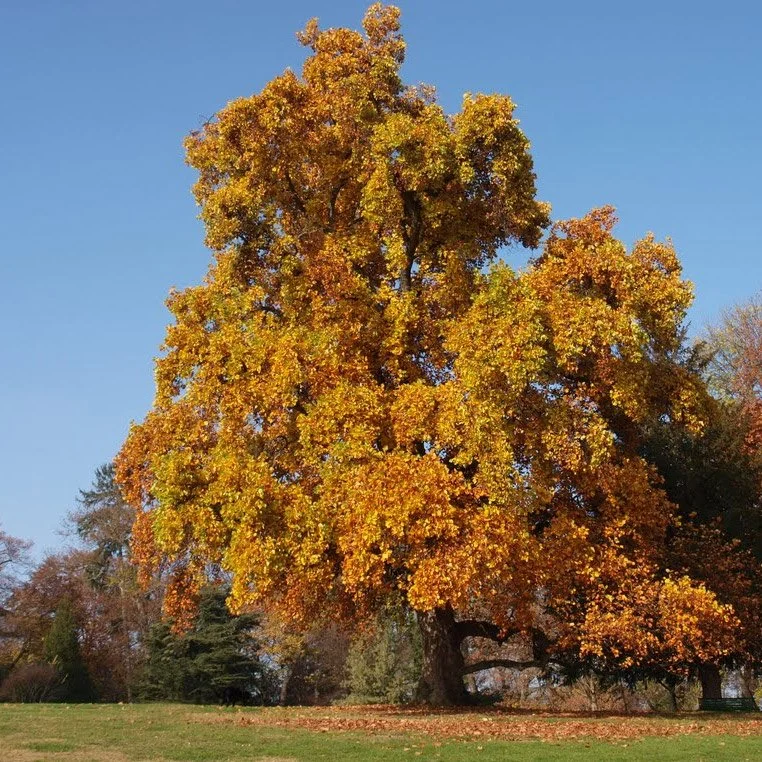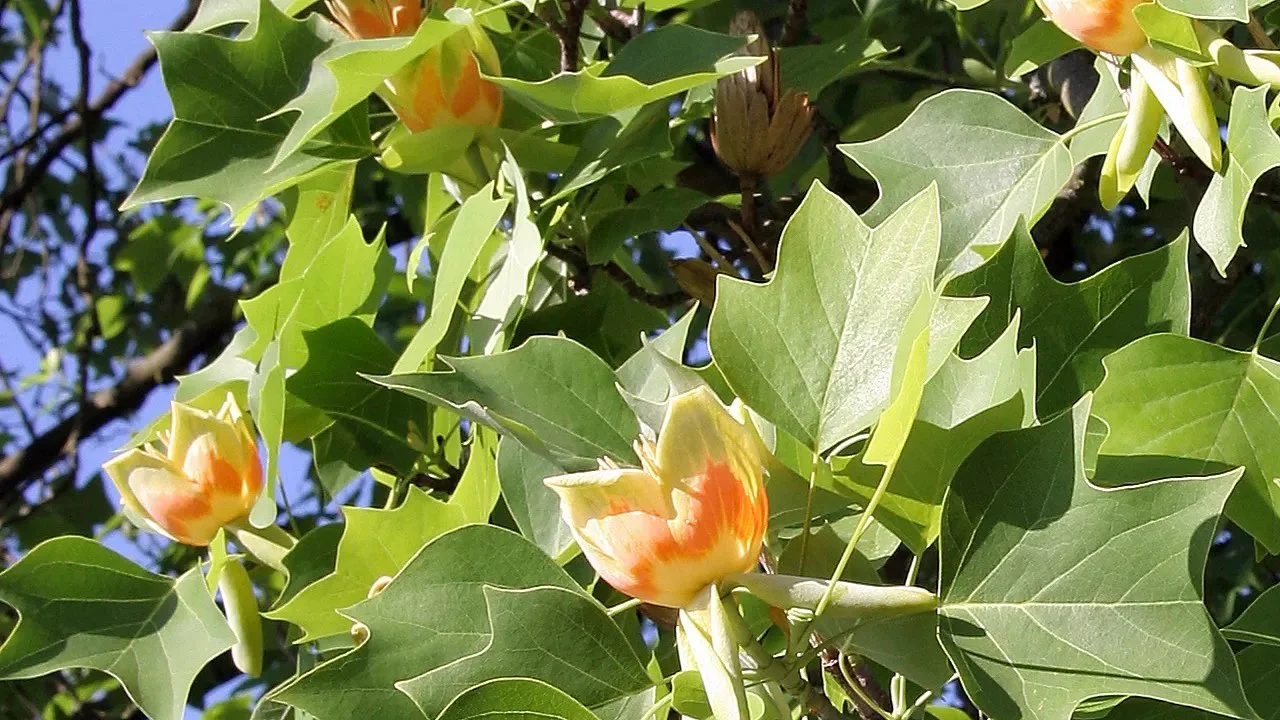Tulip Tree
A Tulip Tree
Description
This is a very large deciduous tree with some specimens reaching over 30m (100ft). The trees are popularly called Tulip trees because of their big flowers that look somewhat like tulips. The tree typically blooms in late spring to early summer, usually between May and June. The leaves have a distinctive shape and turn butter-yellow in autumn.
Facts
The tulip tree is one of the largest and most valued hardwoods in North America and the ‘State Tree’ of Indiana, Kentucky and Tennessee. It is known to reach the height of nearly 60 m. The trunk on large examples is typically 1.2–1.8 m (4–6 ft) in diameter.
Native Americans of the Appalachian Mountains used this tree to make dugout canoes, as well as for building houses. Massive logs were hollowed out and could carry up to 20 people.
The tree was introduced to Britain in the 17th century, probably by the botanist and gardener to Charles I, John Tradescant. Whilst earlier urban tulip trees tend to live less than 100 years, 500-year-old specimens have been recorded in the wild.
Medical
Tulip tree contains salicylates, which can be used for pain relief. Historically the Cherokee tribe used parts of the tulip poplar tree as medicine to treat parasitic worms, diarrhoea, coughs, rheumatism, gastrointestinal distress, fever, and snake bites.
Wildlife Value
Tulip trees provide food in many forms for many animals. Seeds mature in summer and persist into winter, providing food for finches and other birds, mice, rabbits, squirrels and other small mammals. In USA flowers are especially enjoyed by hummingbirds.
Myths and Legends
One story goes that when Adam and Eve were cast out of the Garden of Eden, Eve was so miffed that she pulled the central lobe out of the leaf of a tulip tree that she was passing. Ever since, the leaves have grown without it.
Eastern Tiger Swallowtail butterfly
yellow flowers in the Summer


